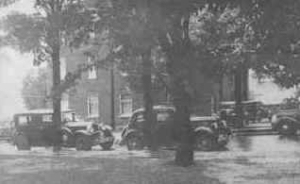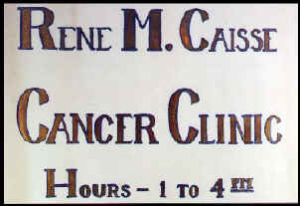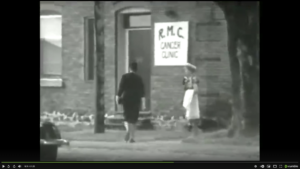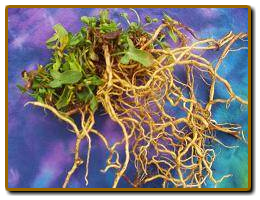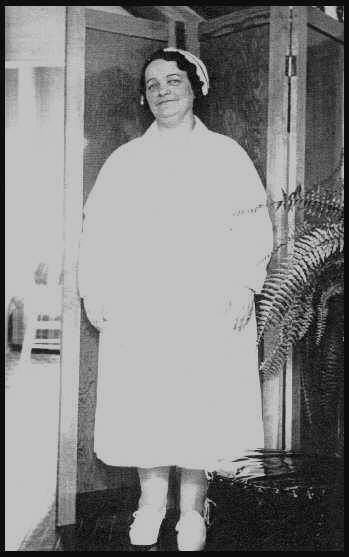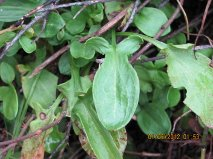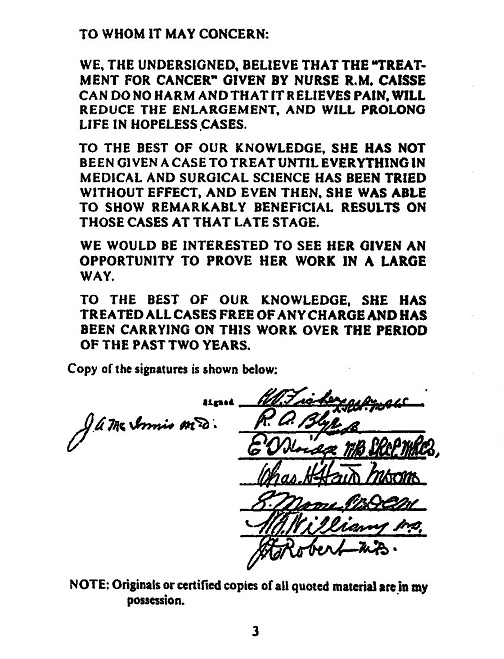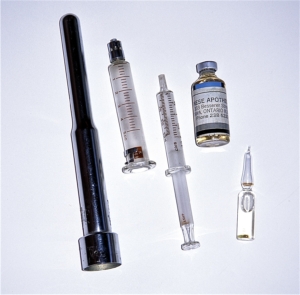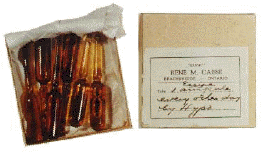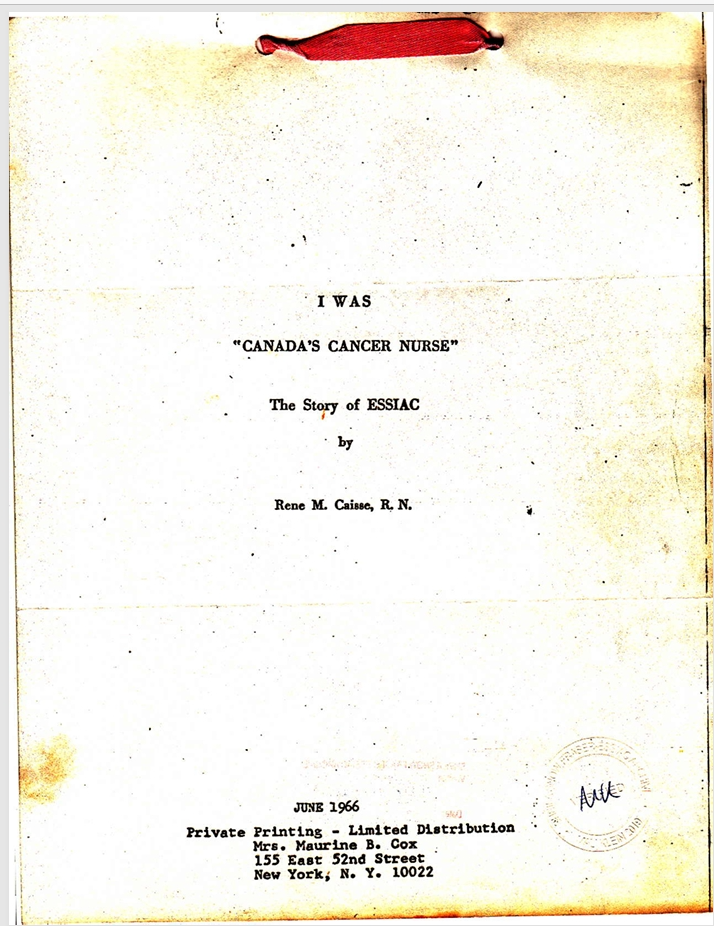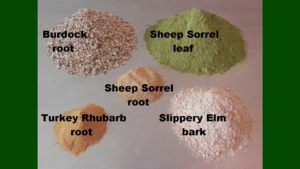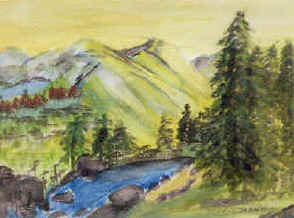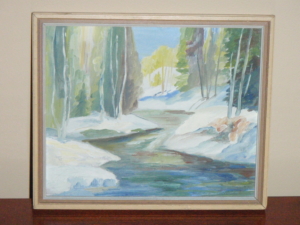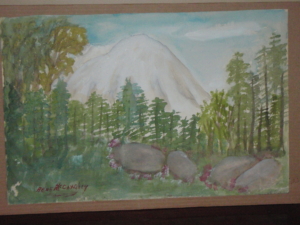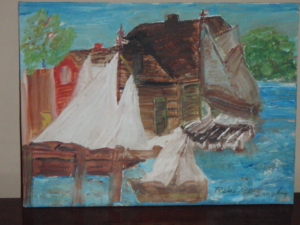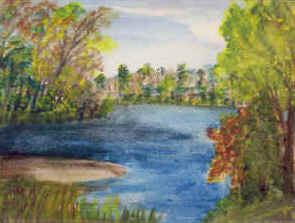HOME > ESSIAC FAQ > IS ESSIAC EFFECTIVE AGAINST CANCER?
IS ESSIAC EFFECTIVE AGAINST CANCER?
The responses you may hear to the question “Is Essiac effective against cancer?” depends on the individual or organization that is answering the question. If it is a pharmaceutical corporation, medical hospital, mainstream medical doctor, Big Medicine, Big Pharma or any website or organization influenced by Big Medicine or Big Pharma (e.g. Wikipedia) the answer will be–There is “no evidence” to support the effectiveness of Essiac.
But is that actually true? What you are about to read gives a much different answer than “no evidence”.
First of all, we must realize that it depends if Rene Caisse’s formula is followed exactly and if the herbs used are of high quality. Therefore, in the context of this article we will assume that we are talking about the correct formula and recipe and the herbs are high quality.
So let’s start with the beginning. How did nurse Rene Caisse discover Essiac tea and what were her results when treating cancer patients? Fortunately, we can read her own words in a booklet that she wrote and published entitled “I Was Canada’s Cancer Nurse.”
I WAS CANADA’S CANCER NURSE
The Story of ESSIAC by Rene M. Caisse, R.N.
[Excerpts below:]
PREFACE
The many reasons why I was not put in prison for running an open “Cancer Clinic” at Bracebridge, Ontario, for eight years were:
First: Because I achieved good results in animal research, under the observation of medical doctors. My treatments caused a regression of the malignant growth in mice, and prolonged life.
Second: Because I achieved the same results on humans, always treating with the permission of medical men of good standing, and under their observation.
Third: Because I had clinical x-ray and pathological proof of results, after everything known to medical science had failed.
Fourth: Because fifty-five thousand (55,000) persons signed a petition to the Ontario Government Legislature in favour of my treatment for cancer; three hundred and eighty-seven (387) patients and many doctors signed this same petition, which was presented to a legislative committee of fifty-nine (59) members of parliament. I lost out by only three (3) votes. I lost because the doctors had assured the Legislature beforehand that they would appoint a “Cancer Commission” to hear my case, and to give my treatment a fair hearing which proved to be a very unfair hearing, as you will see by this story.
Notes: This Cancer Commission could not accuse me of NOT getting good results, because I had the living proof. They could not accuse me of exploiting the public, for I never made a charge for ESSIAC treatment, and many of the patients treated during the 1930s are still living.
“In the mid-twenties I was head nurse at the Sisters of Providence in a northern Ontario town. One day one of my nurses was bathing an elderly lady patient. I noticed that one breast was a mass of scar tissue, and asked about it.
“‘I came out from England nearly 30 years ago.’ she told me. ‘I joined my husband who was prospecting in the wilds of Northern Ontario. My right breast became sore and swollen, and very painful. My husband brought me to Toronto, and the doctors told me I had advanced cancer and my breast must be removed at once. Before we left camp a very old Indian medicine man had told me I had cancer, but he could cure it. I decided I’d just as soon try his remedy as to have my breast removed. One of my friends had died from breast surgery. Besides, we had no money.’
“She and her husband returned to the mining camp, and the old Indian showed her certain herbs growing in the area, told her to make a tea from these herbs and to drink it every day. She was nearly 80 years old when I saw her and there had been no recurrence of cancer. I was much interested and wrote down the names of the herbs she had used. I knew that doctors threw up their hands when cancer was discovered in a patient; it was the same as a death sentence, just about. I decided that if I should ever develop cancer, I would use this herb tea.
“About a year later I was visiting an aged retired doctor whom I knew well. We were walking slowly about his garden when he took his cane and lifted a weed. “Nurse Caisse,” he told me, “if people would use this weed there would be very little cancer in the world.” He told me the name of the plant. It was one of the herbs my patient named as an ingredient of the Indian medicine man’s tea! [Sheep Sorrel]
“A few months later I received word that my mother’s only sister had been operated on in Brockville, Ontario. The doctors had found she had cancer of the stomach with a liver involvement, and gave her at the most six months to live. I hastened to her and talked to her doctor. He was Dr. R. O. Fisher of Toronto, whom I knew well because I had nursed patients for him many times. I told him about the herb tea and asked his permission to try it under his observation, since there was apparently nothing more medical science could do for my aunt. He consented quickly. I obtained the necessary herbs, with some difficulty, and made the tea.
“My aunt lived for 21 years after being given up by the medical profession. There was no recurrence of cancer. Dr. Fisher was so impressed he asked me to use the treatment on some of his other hopeless cancer cases. Other doctors heard about me from Dr. Fisher and asked me to treat patients for them after everything medical science had to offer had failed. They too were impressed with the results. Several of these doctors asked me if I would be willing to use the treatment on an old man whose face was eaten away, and who was bleeding so badly the doctors said he could not live more than 10 days.
“We will not expect a miracle,” they told me. “But if your treatment can help this man in this stage of cancer, we will know that you have discovered something the whole world needs desperately — a successful remedy for cancer.” My treatment stopped the bleeding in 24 hours. He lived for six months with very little discomfort.
“On the strength of what those doctors saw with their own eyes, eight of them signed a petition to the Department of National Health and Welfare at Ottawa, asking that I be given facilities to do independent research on my discovery. Their petition, dated at Toronto on October 27, 1926, read as follows:
‘To Whom It May Concern:
‘We the undersigned believe that the “Treatment for Cancer” given by Nurse R.M. Caisse can do no harm and that it relieves pain, will reduce the enlargement and will prolong life in hopeless cases. To the best of our knowledge, she has not been given a case to treat until everything in medical and surgical science has been tried without effect and even then she was able to show remarkable beneficial results on those cases at that late stage.
We would be interested to see her given an opportunity to prove her work in a large way. To the best of our knowledge she has treated all cases free of any charge and has been carrying on this work over the period of the past two years.’
(Signed by the eight doctors)
“I was joyful beyond words at this expression of confidence by such outstanding doctors regarding the benefits derived from my treatment. My joy was short-lived. Soon after receiving this petition, the Department of Health and Welfare sent two doctors from Ottawa to have me arrested for ‘practicing medicine without a license’.
“This was the beginning of nearly 50 years of persecution by those in authority, from the government to the medical profession, that I endured in trying to help those afflicted with cancer. However, when these two doctors sent from Ottawa, found that I was working with nine of the most eminent physicians in Toronto, and was giving my treatment only at their request, and under their observation, they did not arrest me.
“Dr. W.C. Arnold, one of the investigating doctors, became so interested in my treatment that he arranged to have me work on mice at the Christie Street Hospital Laboratories in Toronto, with Dr. Norich and Dr. Lockhead. I did so from 1928 through 1930. These mice were inoculated with Rous Sarcoma. I kept the mice alive 52 days, longer than anyone else had been able to do, and in later experiments with two other doctors, I kept mice alive for 72 days with ESSIAC.
“This was not my first clinical experience. I had previously converted Mother’s basement into a laboratory, where I worked with doctors who were interested in my treatment. We found that on mice inoculated with human carcinoma, the growth regressed until it was no longer invading living tissue after nine days of ESSIAC treatments.
“This was during the period when I was working on Dr. Fisher’s suggestion that the treatment could be made effective if given by injection, rather than in liquid form, as a tea. I started eliminating one substance and then another; finally when the protein content was eliminated, I found that the ingredients which stopped the malignancy growth could be given by intermuscular injection without causing the reaction that had followed my first experiments with injecting mice. However, I found that the ingredients removed from the injection formula, which reduced growth of cancer, were necessary to the treatment. These apparently carried off destroyed tissue and infections thrown off by the malignancy.
“By giving the intermuscular injection in the forearm, to destroy the mass of the malignant cells, and giving the medicine orally to purify the blood, I got quicker results than when the medicine was all given orally, which was my original treatments until Dr. Fisher suggested further experiments and developing an injection that could be given without reaction.
“I well remember the first injection of the medication in a human patient. Dr. Fisher called and said he had a patient from Lyons, New York, who had cancer of the throat and tongue. He wanted me to inject ESSIAC into the tongue. Well, I was nearly scared to death. And there was a violent reaction. The patient developed a severe chill; his tongue swelled so badly the doctor had to press it down with a spatula to let him breathe. This lasted about 20 minutes. Then the swelling went down, the chill subsided, and the patient was all right. The cancer stopped growing, the patient went home and lived quite comfortably for almost four years.”
IMPORTANT NOTE: Rene Caisse discovered that only Sheep Sorrel solution (Rumex acetosella) could be injected without a “violent reaction” that can be life-threatening as described above. The three other herbs, Burdock root (Arctium lappa), Slippery Elm inner bark (Ulmus rubra/fulva) and Turkey Rhubarb root (Rheum palmatum tanguticum) must be taken orally.
“The herb that will destroy a cancer is the dog-eared sheep sorrel, sometimes called sourgrass. The entire plant must be used.” [Letter from Rene Caisse to Dr. Chester Stock of the Sloan-Kettering Institute for Cancer Research, April 4, 1974]
“It took years to find out the one herb that actually worked on the growth itself [Sheep Sorrel]. The other herbs [Burdock, Slippery Elm & Turkish Rhubarb] I used to purify the blood and throw off any infection thrown off by the malignant growth as it regressed.” [Letter from Nurse Caisse to Dr. Stock dated May 5, 1974]
Injection of pharmaceutical grade Sheep Sorrel solution is no longer done nor is it recommended or allowed by the current medical establishment. Also, it is very painful and may be illegal in certain governmental jurisdictions.
Also, Sheep Sorrel solution injections are not necessary if the sublingual method is used. That is, the four-herb tea or just Sheep Sorrel tea alone can simply be kept in the mouth for a while so that it can be absorbed directly into the capillaries under the tongue. Therefore, it is usually recommended that people sip Essiac tea slowly and not just gulp it down.
If Sheep Sorrel tea is used separately, the other three herbs must also be used as a tea to drink. It is the synergy of all four herbs that supports the elimination of toxins out of the body. [Read p. 24 of the book “ESSIAC: The Secrets of Rene Caisse’s Herbal Pharmacy” for details.]
[Photos below are memorabilia from Rene Caisse’s Cancer Clinic in the 1930s: Left, hypodermics and pharmaceutical grade Sheep Sorrel solution for injections; Right, ampules of Sheep Sorrel solution for injections]
“At the time I first used my treatment on terminal cancer cases–or cancers that did not respond to approved treatment referred to me by the nine Toronto doctors–I was still nursing 12 hours a day, the customary work day for nurses then. I had only my two-hour rest period and my evenings to give to my research work and my treatments.
“I decided to give up nursing, to have more time for my research and treatment of patients. Doctors started sending patients to me at my apartment and I was treating about 30 every day.
“I now felt I had some scientific evidence to present that would convince the medical profession my treatment had real merit. I made an appointment with Dr. Frederick Banting of the Banting Institute, Department of medical Research, University of Toronto, world famous for his discovery of insulin. After reading my case notes, and examining pictures of the man with the face cancer before and after treatment, and x-rays of other cancers I had treated, he sat quietly for a few minutes staring into space.
“‘Miss Caisse,’ he finally said, turning to look me straight in the eyes, ‘I will not say you have a cure for cancer. But you have more EVIDENCE of a beneficial treatment for cancer than anyone in the world.‘”
“He advised me to make application to the University of Toronto for facilities to do deeper research. He even offered to share his laboratory in the Banting Institute and to work with me.”
MY MOTHER WAS AN ESSIAC PATIENT
“About the time I opened my Cancer Clinic in Bracebridge, my own dear mother became ill. The four local doctors said she had gallstones, and her heart was too weak for surgery. Mother was 72 years old at the time.
“As she got worse, I insisted on calling in Dr. Roscoe Graham, a consulting specialist of international fame, for an examination and consultation with the other doctors.
“After the consultation, Dr. Graham came to me and said, ‘Your mother has cancer, Miss Caisse. Her liver is a nodular mass‘.
“Dr. McGibbon, a local doctor who was set against my cancer work, said very sarcastically, ‘Why don’t you do something?’
“‘I’m certainly going to try, Doctor,’ I replied. And I asked Dr. Graham, ‘How long does she have to live?’ Dr. Graham said he thought it would be only a matter of days.
“I immediately started treating her with ESSIAC. I gave it daily for ten days. When she improved, I reduced the treatments to three a week, then to two, then to one. She continued to improve.
“To make a long story short, my mother completely recovered. She passed away quietly after her 90th birthday–without pain, just a tired heart.
“This repaid me for all of my work–giving my mother 18 years of life she would not have had without ESSIAC. It made up a great deal of the persecution I endured at the hands of the medical world.“
After trying unsuccessfully for many years to make Essiac a legally recognized cancer remedy, Rene Caisse had finally realized that she was up against the insurmountable monopoly and control by the medical establishment and the Canadian and United States governments. She summed up her frustration in the Epilogue of her 1966 booklet “I WAS CANADA’S CANCER NURSE”:
EPILOGUE
“Now, like Grandma Moses, I paint pictures. Many, many, oil paintings, trying to forget that which I know I can never forget–that I know a cure for Cancer, and that I can never give it to the world, and must each day see the misery of the patients.
“In spite of everything that has been said and written to the contrary, I always have been, and am still, willing to turn over my formulae to any medical group, at any time, who will GUARANTEE to me that ESSIAC will be used to help suffering humanity, and not ‘put on the shelf’, as has been done with other drugs and treatments.
“Were I to release my formulae to a doctor of proven ability, he would be subjected to the same torture that I have been. He would be powerless against the powerful medical establishment, in many cases upheld by the authorities of various governmental agencies who are sworn to protect the public, not to arrest citizens who disobey orders regarding what treatment they are to have, for their own bodies and at their own expense!
“In some locations, a person is not even allowed to TALK about any treatment not subscribed to by the local medical groups. Where is any freedom of choice for the citizens of so-called “free” countries, like Canada and the United States? Even the press seems blinded to any reports that indicate help outside the “standard procedures.”
“Having spent nearly 30 years trying to get my discovery accepted by the medical profession, I feel that is, at present, a closed book. Once a simple treatment is found, it will revolutionize the entire program and it would lose millions of dollars for the research groups, foundations, societies, doctors, hospitals, equipment manufacturers, drug firms, etc., etc. So why ‘kill the goose that lays the golden eggs‘.
“In my heart, I still hope and pray for a miracle–but, in my mind I see only closed doors. The disappointment is a tragedy that has made my last years said and frustrating: I am grateful that God has given me the strength to retain my sanity.
“Perhaps some other country will have the courage to find and bring help to suffering humanity, though I had hoped it would by my own beloved Canada, or our neighbour, the the United States of America.”
What is presented on this web page is merely a sampling of the information that repudiates the “no evidence” claim by the medical establishment.
Rene Caisse shared her records with Essiac historian Sheila Snow who assembled a massive amount of EVIDENCE in her Sheila Snow Fraser Essiac Archive Collection. The Archive includes many case histories from Rene’s Bracebridge Cancer Clinic, letters from Dr. Chester Stock of the Sloan-Kettering Institute for Cancer Research, photos, newspaper articles, memorabilia, audio files, etc. The digital version of this Archive has been given to the Essiac Circle of Friends and we are using the contents of this Archive here on our new website as we have the time to do so.
Additionally, we must include the innumerable testimonies of real people since the 1930s whose health has been improved and whose lives have been saved by simply drinking Essiac tea (this author’s life included). The numbers are so great that these testimonies must also be included as EVIDENCE, medical establishment debunkers be damned.
We are the Essiac Circle of Friends and we have been committed to carrying on Rene Caisse’s legacy in the United States for the past two decades by providing the highest quality Essiac Tea Herbs on the planet and providing the most accurate and documented information about Essiac Tea and Rene Caisse’s research and discoveries.
“Now, like Grandma Moses, I paint pictures. Many, many, oil paintings, trying to forget that which I know I can never forget–that I know a cure for Cancer, and that I can never give it to the world, and must each day see the misery of the patients.” Rene M. Caisse, 1888 — 1978
© 2024 Essiac Circle of Friends
The information on this website is for educational and historical purposes and not to be construed as medical advice. Everyone’s body is different so there is no one-size-fits-all for health issues. It should be noted that medical doctors are not usually taught about such subjects as herbal medicine, nutritional supplements, non-pharmceutical approaches to health, etc. Therefore, choosing an appropriate health professional is a human right and that is up to the individual seeking health improvement.
© 2024 Essiac Circle of Friends
